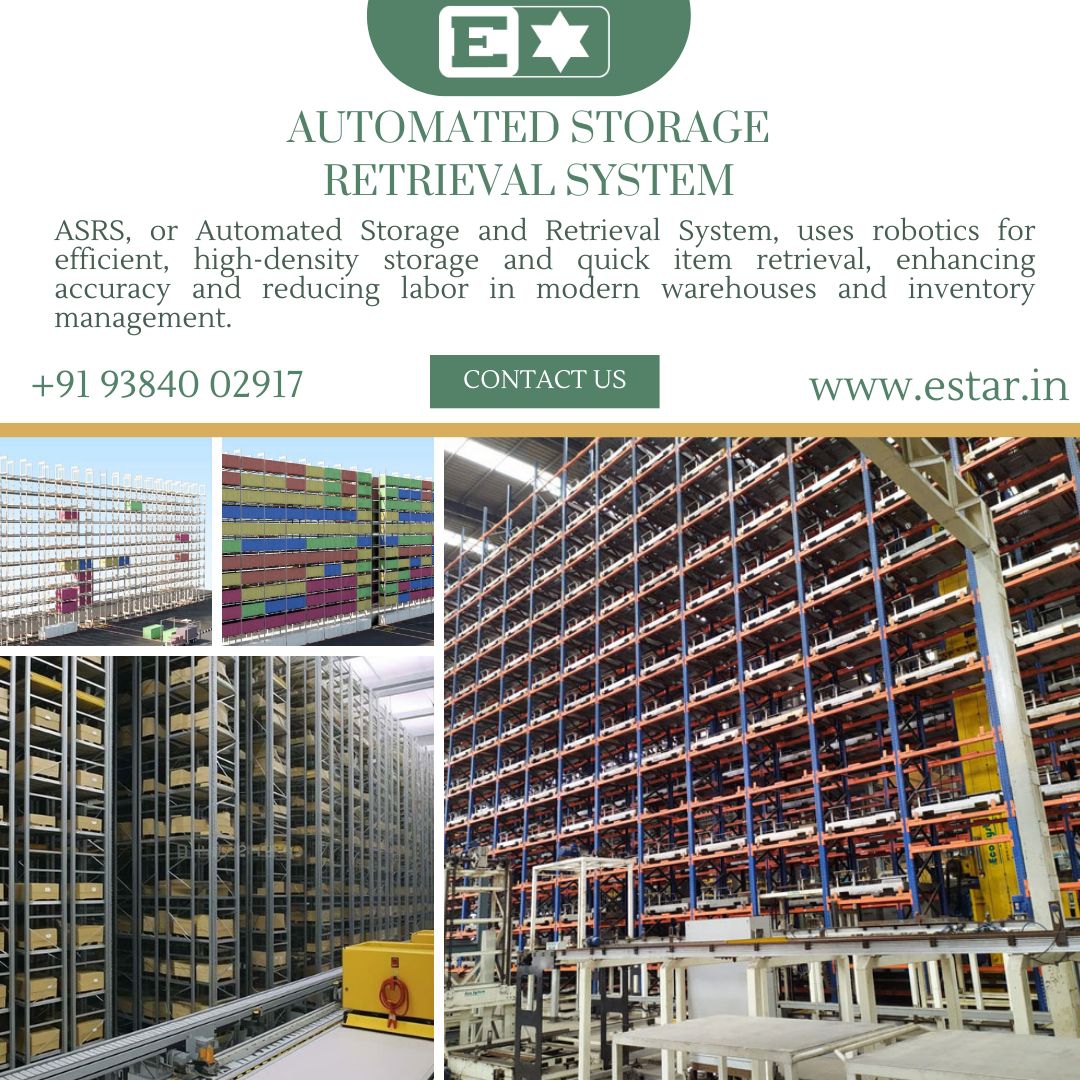Introduction to Automated Storage and Retrieval Systems
The modern world demands efficiency, especially in industries like manufacturing, logistics, and warehousing. The Automated Storage and Retrieval System (ASRS) has become a cornerstone of operational excellence by optimizing inventory management, improving space utilization, and reducing human error. These systems automate the process of storing and retrieving goods, offering businesses a competitive edge in their supply chain operations.
What is an Automated Storage and Retrieval System (ASRS)?
An Automated Storage and Retrieval System is a computer-controlled system designed to store and retrieve products or materials with precision and speed. ASRS typically consists of storage racks, shuttles, cranes, and sophisticated software. These systems are highly flexible and can handle a wide variety of goods, from small components to large pallets.
Components of ASRS
-
Storage Racks:
The structured framework where goods are stored systematically. These racks can be customized to hold items of different sizes. -
Material Handling Equipment:
Includes cranes, shuttles, and conveyors used to transport goods between storage locations and workstations. -
Control Systems:
Software that manages inventory, directs movements, and integrates with enterprise resource planning (ERP) systems. -
Sensors and Robotics:
Enhance precision, track goods, and ensure safety during operations.
Types of ASRS
1. Unit Load ASRS
Designed for handling large and heavy items, typically stored on pallets. This type is ideal for industries with high-volume requirements.
2. Mini-Load ASRS
Used for smaller, lightweight items, often stored in bins or trays. Mini-load systems are widely used in e-commerce and small part manufacturing.
3. Shuttle-Based ASRS
Highly flexible systems using shuttles to move goods horizontally and vertically within racks. They are efficient in high-density storage environments.
4. Vertical Lift Modules (VLM):
These systems use an enclosed structure to retrieve goods vertically. VLMs are space-saving and ideal for operations with height constraints.
5. Horizontal Carousels:
Circular systems that rotate to bring stored items to the operator. They are suitable for high-speed picking operations.
6. Vertical Carousels:
Similar to horizontal carousels but operate in a vertical plane. These systems are commonly used for storing lightweight items.
Benefits of Automated Storage and Retrieval Systems
1. Increased Space Utilization
ASRS maximizes the use of vertical and horizontal space, allowing businesses to store more goods within the same footprint.
2. Enhanced Operational Efficiency
Automation reduces manual labor, streamlines processes, and significantly improves order fulfillment rates.
3. Improved Accuracy
With advanced tracking systems and error detection mechanisms, ASRS minimizes mistakes in inventory handling and retrieval.
4. Cost Savings
Although the initial investment is high, ASRS reduces labor costs, operational errors, and inventory shrinkage, resulting in long-term savings.
5. Enhanced Safety
By automating repetitive tasks and reducing manual handling, ASRS creates a safer working environment for employees.
6. Scalability
These systems can be expanded as business needs grow, making them a future-proof investment.
Industries Utilizing ASRS
-
E-commerce:
Handles high-order volumes with precision, ensuring faster delivery times. -
Manufacturing:
Integrates seamlessly into production lines for just-in-time inventory management. -
Retail:
Stores and retrieves seasonal or high-demand products efficiently. -
Pharmaceuticals:
Manages sensitive and high-value inventory with strict compliance requirements. -
Food and Beverage:
Ensures proper storage of perishable goods, adhering to temperature control standards.
How Does ASRS Work?
-
Inventory Input:
Goods are scanned, categorized, and entered into the ASRS database upon arrival. -
Storage Allocation:
The system identifies the best storage location based on size, weight, and retrieval frequency. -
Automated Storage:
Cranes, shuttles, or conveyors transport the goods to designated locations in the storage racks. -
Retrieval:
When an order is placed, the system retrieves the required items quickly and delivers them to the workstation. -
Data Integration:
ASRS integrates with inventory management systems to provide real-time stock updates and analytics.
Challenges of Implementing ASRS
-
High Initial Costs:
The investment required for ASRS can be significant, making it less accessible for small businesses. -
System Downtime:
Any technical malfunction can disrupt operations, emphasizing the need for robust maintenance. -
Customization Requirements:
ASRS must be tailored to specific business needs, which can increase implementation time and costs. -
Employee Training:
Workers need to be trained to operate and manage ASRS efficiently.
Future of Automated Storage and Retrieval Systems
The integration of Artificial Intelligence (AI) and Machine Learning (ML) is shaping the future of ASRS. Predictive analytics, automated decision-making, and real-time adaptability are enabling businesses to operate with unprecedented efficiency. Additionally, advancements in robotics and IoT (Internet of Things) will further enhance the capabilities of ASRS.
Conclusion
The Automated Storage and Retrieval System is a revolutionary innovation in inventory management and logistics. It offers unparalleled efficiency, accuracy, and scalability, making it an essential tool for businesses aiming to stay competitive in a fast-paced world. As technology continues to evolve, ASRS will remain at the forefront of operational excellence.




